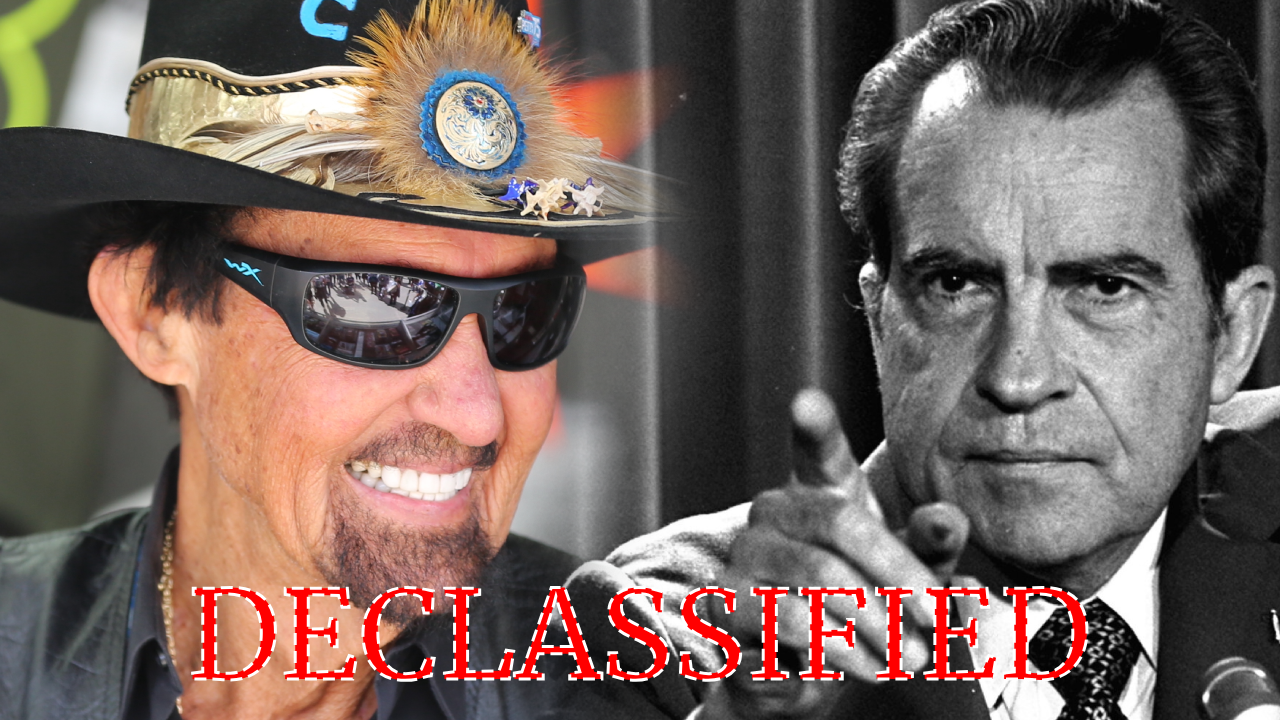The King's Command Performance: Declassified Rumors Suggest White House 'Encouraged' Petty's Controversial 200th Win!

We all have the image burned into our minds. July 4th, 1984. The scorching Florida sun beating down on Daytona International Speedway. Air Force One parked just off the backstretch. And in the broadcast booth, a sitting President of the United States, Ronald Reagan, giving the command to start engines.
It was a moment bigger than racing. It was America.
And when Richard Petty, "The King," battled Cale Yarborough in the final laps to snatch his historic, record-setting 200th career victory, it felt like a Hollywood ending. The King, The President, and the most famous trophy in motorsports. It doesn't get more patriotic than that.
We also know the official post-race story. The whispers that turned into roars. Petty’s No. 43 Pontiac was hauled off for inspection, and the rumor was confirmed: the engine was illegally oversized. NASCAR docked points and issued a hefty fine, but the history books were already printed. The win stood. For forty years, the accepted narrative has been that a savvy crew chief, maybe The King himself, rolled the dice to find an edge on the biggest stage.
But what if that wasn't the whole story? What if the most infamous engine in NASCAR history wasn't built to cheat the competition, but to fulfill a higher, unspoken order?
The Whispers Behind the Hauler
Trackside Tea has spoken with a source - a man who, for decades, has kept his silence out of a complex mix of fear and respect. We'll call him "Bill." In 1984, Bill was a fresh-faced junior crewman for a rival team, and he claims to have witnessed a conversation that changes everything we thought we knew about that day.
He describes a scene away from the prying eyes of the press, in the humid shadows between two haulers. It was a brief, quiet meeting between one of Petty's top crew members and a clean-cut man in a suit and tie, notable only for the small, shiny American flag pin on his lapel. This was no sponsor. This was a man from the President's advance team.
According to our source, no direct orders were given. Nothing so clumsy. The words, as he recalls them being relayed later, were simple, suggestive, and coated in patriotic pressure.
"A win today... with the President watching... it would be a powerful image for the country," the man in the suit allegedly said. "We need to ensure a good show. It would be a shame if the story of the day was anything other than a great American champion winning on America's birthday."
An Engine of Patriotism?
Read between the lines. That wasn't a friendly chat; it was a directive. The message, our source insists, was crystal clear: Losing is not an option.
Suddenly, the oversized engine doesn't look like a greasy tool for cheating. It looks like an insurance policy. An assurance that the perfect political photo op wouldn't be ruined by a carburetor issue or a late-race charge from another driver. The Petty team, cornered by the weight of the moment, wasn't just building a race engine; they were arguably fulfilling a patriotic duty.
Think about it. Richard Petty, a man who defined an era of racing, was put in an impossible position. Does he stick to the letter of the NASCAR rulebook? Or does he answer the call of a higher power, not from above, but from the Oval Office itself, to deliver a moment of national pride? The King wasn't just racing for a trophy; he may have been pressured into racing for the red, white, and blue.
So, what are we to believe now? Was the King's 200th win a black mark on a legendary career, a simple case of getting caught? Or was it the most masterful piece of political theater ever staged on a superspeedway, with The King and his crew playing the lead roles in a drama directed from Washington?
The official story is history. But the truth, as it so often does, might just be hiding in the shadows of the garage.